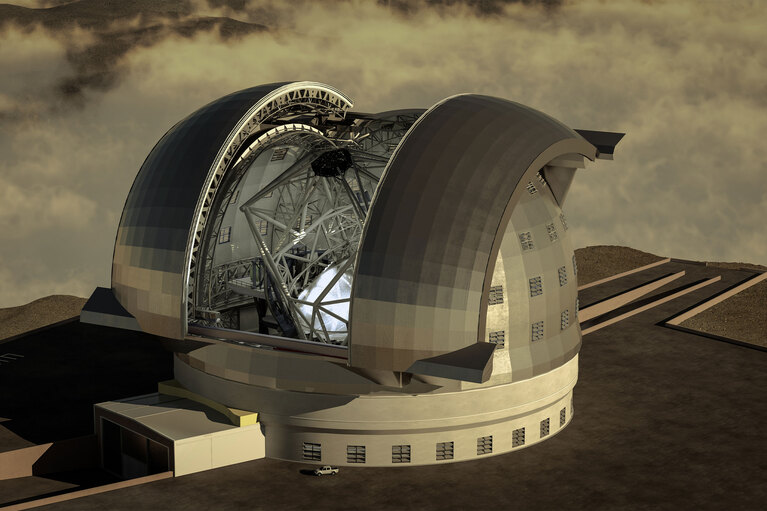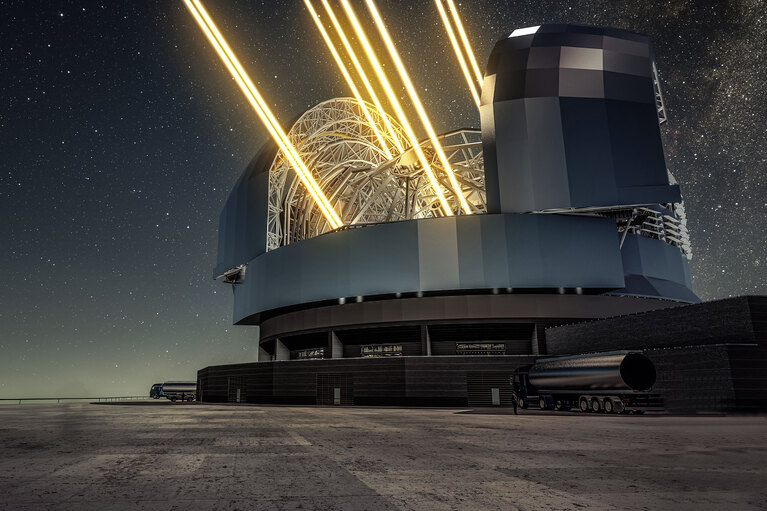
ReVolt – 技术问答
ReVolt 正在解决好莱坞片场的排放问题,下一步将把便携式 DC 电源应用于建筑工地、应急响应事件等领域
尊敬的用户:
为了改进 Vicor 网站,我们将于美国东部时间 12 月 29 日上午 11:30 至下午 2:00 对网站进行维护。
在此期间,您可能无法查看网站的某些部分,特别是产品页面和产品型号列表。
对于给您带来的不便,我们深表歉意,并感谢您的耐心等待。
– Vicor 网站团队
Microgate 和 Vicor 正在克服复杂的技术挑战(波前像差),以将深空观测升至全新水准。了解功率密集型模块如何支持太空的新发现。
在智利沙漠的中心 Cerro Armazones 山上,美国公司 Vicor 和意大利公司 Microgate 这两家技术领导者正在携手打造有史以来最大的地面光学望远镜 —— 极大望远镜 (ELT)。得益于高密度电源系统和革命性的自适应光学技术,这一工程壮举有望以前所未有的清晰度观测宇宙。
极大望远镜(ELT)的主镜直径达 39 米,或为观测天文学实现革命性突破,使我们能够以前所未有的清晰度窥探宇宙深处。
这一成就由专注于高密度电源模块的美国公司 Vicor 和位于博尔扎诺的意大利公司 Microgate 合作实现,Micorgate 是自适应光学控制系统的领导者。他们正在共同开发先进的技术解决方案,克服地面天文观测的挑战。
图 1:Microgate 望远镜。
从地面观测天文的主要障碍之一是大气湍流,它会扭曲来自天体的光线。为了克服这一问题,ELT 配备了一个名为 M4 的自适应副反射镜,其直径为 2.4 米,厚度仅为 1.9 毫米。该镜由 5,316 个音圈电机控制,可使镜面实时变形以补偿大气像差,确保生成极其清晰的图像。
为确保正常运行,自适应光学系统需要一款精确、高效、紧凑的电源。
Microgate 选择了以高功率密度和可靠性著称的 Vicor DCM3623 系列 DC-DC 转换器模块。每个模块可为多达 36 个电机通道供电,降低了布线复杂性并改善了系统热管理。
Vicor 与 Microgate 的合作是高科技领域国际合作的典范。
得益于此次合作,极大望远镜(ELT)能够以前所未有的精度观测宇宙,为了解宇宙的起源开辟了新领域。Microgate 硬件工程师 Gerald Angerer 表示:“Vicor 的高效率、高功率密度模块非常紧凑、可靠,电路板空间占用极少。我们使用这些模块已超过 10 年,目前还没有能够与之媲美的替代方案。”
极大望远镜(ELT)使得人类朝着探索宇宙的旅程迈出了重要一步,这要归功于 Vicor 和 Microgate 等公司的创新与合作。
本文最初由 Electronica AV 发布。

